Listed buildings: Bus shelter and cattle trough get listed status
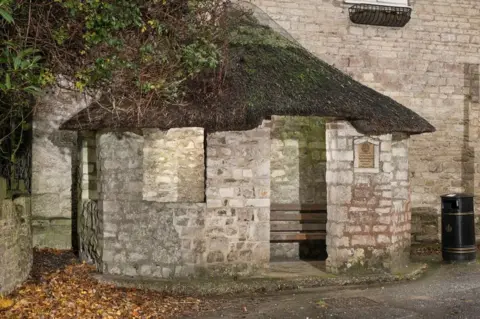 Historic England
Historic EnglandA bus shelter, a cattle trough and a Rolls-Royce test hangar are among the more unusual heritage places gaining listed status this year.
Highlights from the 952 buildings and sites given new or upgraded protection also include an elaborate pedestrian subway in London and a thatched cricket pavilion at Uppingham School in Rutland.
Historic England said 2018 saw 924 new listed buildings and structures.
The year, which marked the centenary of the end of World War One, saw 638 war memorials added to the list or upgraded in status.
Pedestrian Subway, Vestibule, Terrace and Stairs beneath Crystal Palace Parade, London
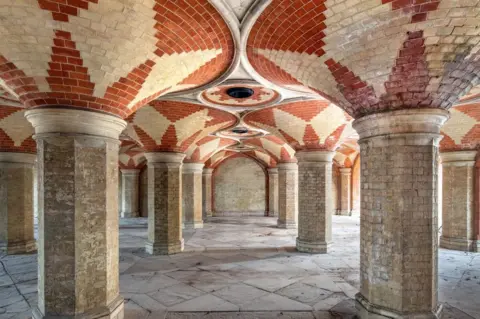 Historic England
Historic EnglandThe Crystal Palace subway, vestibule, terrace and stairs provide an elaborate pedestrian passageway, with finely-crafted Byzantine-style vaulting in red and cream brick and chequered floors in alternating stone.
The structure dates from 1865 and was built to link a new railway station directly to the entrance of the Crystal Palace.
Sculptures of Robin Hood and his Merry Men, Nottingham
 Historic England
Historic EnglandAcclaimed sculptor and Nottingham native James Arthur Woodford was commissioned to craft a group of sculptures depicting the legendary characters of Robin Hood and his Merry Men, to commemorate the visit of the then Princess Elizabeth and the Duke of Edinburgh in 1949.
Woodford conceived the group of sculptures to occupy the land in the outer ditch of Nottingham Castle, the setting of one of the most popular legendary tales of Robin Hood.
Tidal Observatory, Newlyn, Cornwall
 Historic England
Historic EnglandIn the early 20th Century, the south pier at Newlyn was extended to give better protection to the harbour and a tidal observatory was built at its north end. The observatory was one of three constructed at the request of Ordnance Survey to establish Mean Sea Level.
With the observatory being completed in 1914, hourly measurements were taken of the height of the tide between 1915 and 1921, determining that Newlyn was the most stable and therefore the principal place to establish Mean Sea Level for the entire country.
The Cock Sign, Sutton High Street
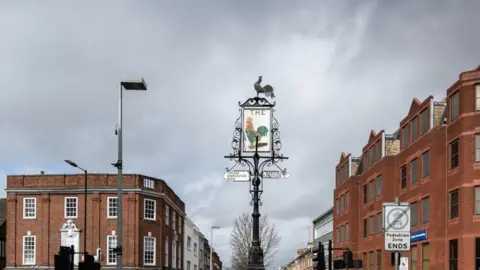 Historic England
Historic EnglandThe Cock Sign stands at a prominent location at the junction of Sutton High Street and Carshalton Road.
It dates to about 1907 and originates from a pub called The Cock that was located at a junction known as The Cock Cross Roads and owned by "Gentleman Jackson" (1769-1845), a celebrated English boxer who won the title Champion of England.
Old Lifeboat House, East Terrace, Walton-on-the-Naze, Essex
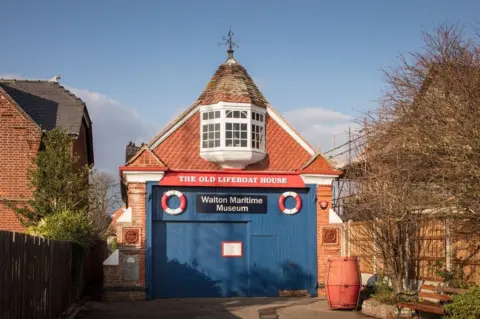 Historic England
Historic EnglandThe former lifeboat house, built in 1884, was designed by CH Cooke and represents the crucial role played by the Royal National Lifeboat Institution (RNLI) in saving lives at sea since the 19th Century.
Historic England said its wide gabled structure and ornamental treatment, made up of fish-scale tiling, decorative moulded brick, and a beautifully incorporated bay window, created a finely detailed and strikingly composed building.
University of York Campus, Heslington, York
 Historic England
Historic EnglandThe University of York Campus designed landscape was laid out between 1963 and 1980.
Historic England described it as a high-quality post-war university landscape that fulfils the architects' masterplan vision of creating a town in miniature with a pedestrianised environment. The landscape is relatively unaltered since it was laid out.
Wing Test Hangars, Rolls-Royce Hucknall, Nottinghamshire
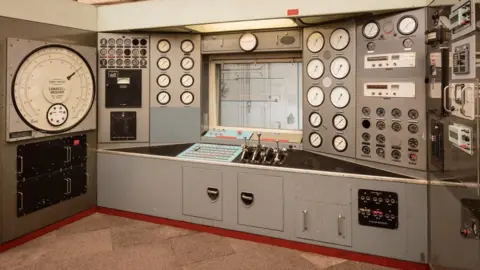 Historic England
Historic EnglandIn 1934, Rolls Royce leased two hangars at the Hucknall airfield in Nottinghamshire, which was established in 1917, and created a testing programme there for aero engines and equipment.
The building is largely intact and features many surviving fixtures dating back to the mid-20th Century, including an engine-testing control panel, observation windows, wing spar mount assembly, roller doors, pierced metal sheet lining, as well as fittings and support for a de-tuner.
Cattle trough and drinking fountain, Hampstead, London
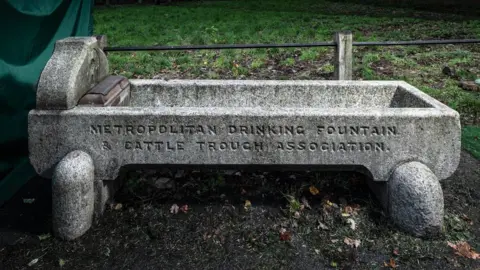 Historic England
Historic EnglandCattle troughs were once commonplace in Britain, with the Metropolitan Drinking Fountain and Cattle Trough Association responsible for more than 1,000 of them.
About 500 of these were located in London, however a large number have now been lost. The trough in Spaniards Road is believed to have been erected in 1916, making it a particularly late example of its type. Although the pump and spout mechanism are missing, the cattle trough serves as a reminder of a time in the early 20th Century when horse-drawn transport was still commonplace, despite the increasing use of cars.
Cricket Pavilion, Uppingham School, Rutland
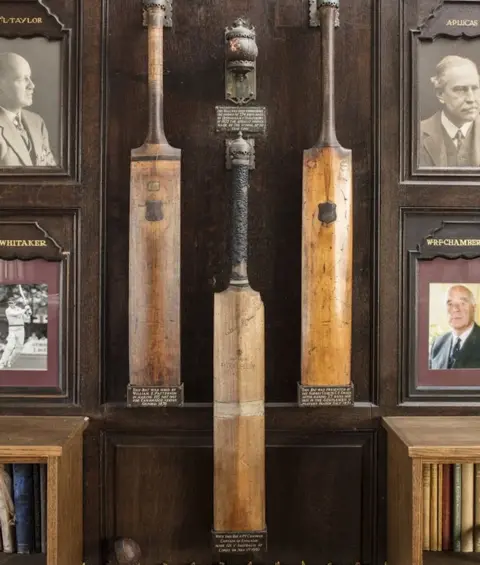 Historic England
Historic EnglandSir Walter John Tapper, a notable architect with many listed buildings to his name, was commissioned by Uppingham School to follow the tradition of public schools and universities investing in cricket pavilions.
Uppingham School's pavilion has a deep thatched roof and an interior with finely detailed features such as delicate leaf-like plasterwork on the ceiling and ornate ironmongery on the windows.
East Mellwaters (walled settlement) County Durham
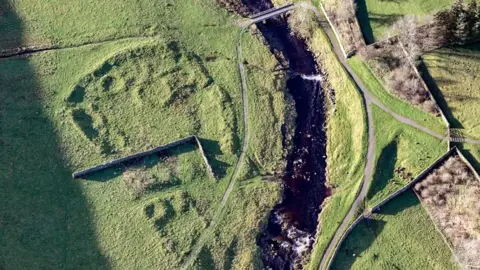 Historic England
Historic EnglandThis walled settlement at East Mellwaters in County Durham is a rare form of late prehistoric settlement.
Traditionally, in Northern England, Iron Age and Roman-British native settlements take a variety of forms, with enclosures being defined by a bank and a ditch.
Former Otterington Railway Station, North Yorkshire
 Historic England
Historic EnglandThis station building at the former Otterington Railway Station in North Yorkshire with its signal box was built by the London and North Eastern Railway (LNER) in 1932.
It was a replacement for the Victorian station that had been cleared away to allow the expansion of the line to four tracks.
Photos courtesy of Historic England.
